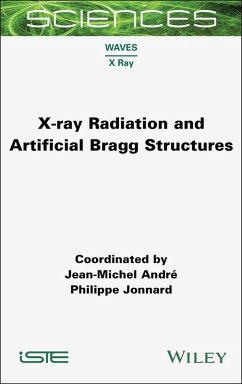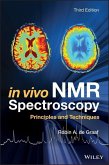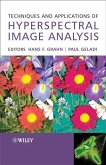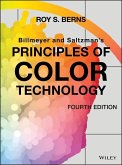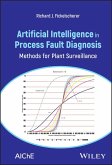142,99 €
142,99 €
inkl. MwSt.
Sofort per Download lieferbar

0 °P sammeln
142,99 €
Als Download kaufen

142,99 €
inkl. MwSt.
Sofort per Download lieferbar

0 °P sammeln
Jetzt verschenken
Alle Infos zum eBook verschenken
142,99 €
inkl. MwSt.
Sofort per Download lieferbar
Alle Infos zum eBook verschenken

0 °P sammeln
- Format: PDF
- Merkliste
- Auf die Merkliste
- Bewerten Bewerten
- Teilen
- Produkt teilen
- Produkterinnerung
- Produkterinnerung

Bitte loggen Sie sich zunächst in Ihr Kundenkonto ein oder registrieren Sie sich bei
bücher.de, um das eBook-Abo tolino select nutzen zu können.
Hier können Sie sich einloggen
Hier können Sie sich einloggen
Sie sind bereits eingeloggt. Klicken Sie auf 2. tolino select Abo, um fortzufahren.

Bitte loggen Sie sich zunächst in Ihr Kundenkonto ein oder registrieren Sie sich bei bücher.de, um das eBook-Abo tolino select nutzen zu können.
The artificial Bragg structures (ABS) studied in this book have revolutionized X-ray optics. They are based on (quasi-) periodic stacks of nanoscale thin films with periods close to the wavelength of the radiation.
X-ray Radiation and Artificial Bragg Structures presents the historical prolegomena relating to X-ray sources and the initial development of ABS. It analyzes the modeling of ABS characteristics and performance, and their optimization. It also presents matrix and recursive methods, coupled-wave theory and scattering theory.
This book also examines ABSs as seats for special…mehr
- Geräte: PC
- mit Kopierschutz
- eBook Hilfe
- Größe: 13.32MB
Andere Kunden interessierten sich auch für
![X-ray Radiation and Artificial Bragg Structures (eBook, ePUB) X-ray Radiation and Artificial Bragg Structures (eBook, ePUB)]() Jean-Michel AndreX-ray Radiation and Artificial Bragg Structures (eBook, ePUB)142,99 €
Jean-Michel AndreX-ray Radiation and Artificial Bragg Structures (eBook, ePUB)142,99 €![The Chemistry of Contrast Agents in Medical Magnetic Resonance Imaging (eBook, PDF) The Chemistry of Contrast Agents in Medical Magnetic Resonance Imaging (eBook, PDF)]() Andre S. MerbachThe Chemistry of Contrast Agents in Medical Magnetic Resonance Imaging (eBook, PDF)165,99 €
Andre S. MerbachThe Chemistry of Contrast Agents in Medical Magnetic Resonance Imaging (eBook, PDF)165,99 €![In Vivo NMR Spectroscopy (eBook, PDF) In Vivo NMR Spectroscopy (eBook, PDF)]() Robin A. de GraafIn Vivo NMR Spectroscopy (eBook, PDF)120,99 €
Robin A. de GraafIn Vivo NMR Spectroscopy (eBook, PDF)120,99 €![Techniques and Applications of Hyperspectral Image Analysis (eBook, PDF) Techniques and Applications of Hyperspectral Image Analysis (eBook, PDF)]() Techniques and Applications of Hyperspectral Image Analysis (eBook, PDF)146,99 €
Techniques and Applications of Hyperspectral Image Analysis (eBook, PDF)146,99 €![Artificial Materials (eBook, PDF) Artificial Materials (eBook, PDF)]() Olivier VanbésienArtificial Materials (eBook, PDF)168,99 €
Olivier VanbésienArtificial Materials (eBook, PDF)168,99 €![Billmeyer and Saltzman's Principles of Color Technology (eBook, PDF) Billmeyer and Saltzman's Principles of Color Technology (eBook, PDF)]() Roy S. BernsBillmeyer and Saltzman's Principles of Color Technology (eBook, PDF)129,99 €
Roy S. BernsBillmeyer and Saltzman's Principles of Color Technology (eBook, PDF)129,99 €![Artificial Intelligence in Process Fault Diagnosis (eBook, PDF) Artificial Intelligence in Process Fault Diagnosis (eBook, PDF)]() Richard J. FickelschererArtificial Intelligence in Process Fault Diagnosis (eBook, PDF)157,99 €
Richard J. FickelschererArtificial Intelligence in Process Fault Diagnosis (eBook, PDF)157,99 €-
-
-
The artificial Bragg structures (ABS) studied in this book have revolutionized X-ray optics. They are based on (quasi-) periodic stacks of nanoscale thin films with periods close to the wavelength of the radiation.
X-ray Radiation and Artificial Bragg Structures presents the historical prolegomena relating to X-ray sources and the initial development of ABS. It analyzes the modeling of ABS characteristics and performance, and their optimization. It also presents matrix and recursive methods, coupled-wave theory and scattering theory.
This book also examines ABSs as seats for special quantum and magneto-optic phenomena. It discusses the application of ABSs, as well as promising developments in EUV lithography and the realization of new X-ray sources. Finally, it presents the prospects offered by ABSs in the near future, particularly in the field of coherent sources and X-ray lasers.
X-ray Radiation and Artificial Bragg Structures presents the historical prolegomena relating to X-ray sources and the initial development of ABS. It analyzes the modeling of ABS characteristics and performance, and their optimization. It also presents matrix and recursive methods, coupled-wave theory and scattering theory.
This book also examines ABSs as seats for special quantum and magneto-optic phenomena. It discusses the application of ABSs, as well as promising developments in EUV lithography and the realization of new X-ray sources. Finally, it presents the prospects offered by ABSs in the near future, particularly in the field of coherent sources and X-ray lasers.
Dieser Download kann aus rechtlichen Gründen nur mit Rechnungsadresse in D ausgeliefert werden.
Produktdetails
- Produktdetails
- Verlag: John Wiley & Sons
- Seitenzahl: 272
- Erscheinungstermin: 7. Januar 2025
- Englisch
- ISBN-13: 9781394352005
- Artikelnr.: 72790153
- Verlag: John Wiley & Sons
- Seitenzahl: 272
- Erscheinungstermin: 7. Januar 2025
- Englisch
- ISBN-13: 9781394352005
- Artikelnr.: 72790153
- Herstellerkennzeichnung Die Herstellerinformationen sind derzeit nicht verfügbar.
Jean-Michel André holds a doctorate in engineering from the Université Pierre et Marie Curie, France. He is a former CNRS engineer and, in 2011, was awarded the instrumentation prize of the Société française de physique and the Société chimique de France.
Philippe Jonnard is CNRS Research Director at LCPMR, France. He is a specialist in X-ray spectroscopy, and studies the stacking of nanometric thin films using innovative X-ray methods.
Philippe Jonnard is CNRS Research Director at LCPMR, France. He is a specialist in X-ray spectroscopy, and studies the stacking of nanometric thin films using innovative X-ray methods.
Chapter 1. Historical Prolegomena 1
Jean-Michel ANDRÉ and Philippe JONNARD
1.1. A short history of sources of X-rays 1
1.2. A short history of artificial Bragg structures and changes in them 17
1.2.1. Older work 17
1.2.2. Modern work 19
1.3. References 21
Chapter 2. Propagation of X-ray Radiation in a Bragg Structure: Frequency
Domain 29
Jean-Michel ANDRÉ and Philippe JONNARD
2.1. Introduction to the interaction of X-rays and matter 29
2.2. Propagation in the frequency domain 33
2.2.1. Master equations and the Hill equation 35
2.2.2. Solving the Hill equation using the Bloch-Floquet method 37
2.2.3. Matrix methods 41
2.2.4. Recursive methods 57
2.3. Superluminal propagation and density of optical modes 65
2.4. References 67
Chapter 3. Coupled-wave Theories 71
Jean-Michel ANDRÉ and Philippe JONNARD
3.1. Introduction 71
3.2. Frequency domain 72
3.2.1. Standard theory of coupled waves 72
3.2.2. Tagaki-Taupin method 80
3.3. Time domain 83
3.4. Generalization to Laue geometry 87
3.5. References 94
Chapter 4. Propagation in Hybrid Bragg Structures: Scattering Theory 97
Jean-Michel ANDRÉ and Philippe JONNARD
4.1. Introduction 97
4.2. Considerations on hybrid structures 98
4.2.1. Grating structures 99
4.2.2. Fresnel lens structures 100
4.3. Scattering theories applied to hybrid structures 103
4.3.1. General approach 103
4.3.2. Application to Bragg-Fraunhofer diffraction 107
4.3.3. Application to Bragg-Fresnel diffraction 114
4.4. References 116
Chapter 5. Optimization and Design of Artificial Bragg Mirrors 121
Jean-Michel ANDRÉ and Philippe JONNARD
5.1 Theoretical optimization of the mirrors 121
5.1.1. Introduction 121
5.1.2. Role of the number of unit cells 122
5.1.3. Case of a bilayer unit cell 123
5.2. Practical optimization of mirrors 130
5.2.1. Accidental defects 130
5.2.2. "Natural" defects - Rough or diffuse interfaces 134
5.2.3. Practical optimization techniques 143
5.3. Design of mirrors and inverse problem 146
5.3.1. Design of "wide-band" mirrors and super-mirrors 146
5.3.2. Design of chirped mirrors 152
5.4. References 152
Chapter 6. Physics of Artificial Bragg Structures: Presentation of Some
Phenomena 163
Jean-Michel ANDRÉ, Karine LE GUEN and Philippe JONNARD
6.1. Introduction 163
6.2. Kossel diffraction 163
6.3. Purcell effect 167
6.4. Bragg-Raman effect 169
6.5. Optical and topological states - X-ray quantum optics 171
6.6. Magnetism 173
6.7. References 182
Chapter 7. Applications of Artificial Bragg Structures 189
Jean-Michel ANDRÉ, Karine LE GUEN and Philippe JONNARD
7.1. Wavelength dispersion and monochromatization 189
7.1.1. Wavelength dispersion 189
7.1.2. Combined monochromatization 196
7.2. Focusing using lenses 199
7.2.1. Laue lens 199
7.2.2. Bragg-Fresnel lens 202
7.3. Polarimetry, interferometry and metrology of X-ray radiation 203
7.3.1. Polarization 203
7.3.2. Coherence 205
7.4. Instruments and imaging at quasi-normal incidence 205
7.4.1. EUV lithography 206
7.4.2. Telescopes for EUV astrophysics 208
7.4.3. X-ray/EUV microscope 209
7.5. Instruments and imagery under grazing incidence 210
7.6. Elements for X-ray radiation sources 212
7.6.1. Introduction 212
7.6.2. Optical elements for sources of X-ray radiation 212
7.6.3. Elements generating sources of X-ray radiation 214
7.7. References 218
Chapter 8. Perspectives and Conclusion 229
Jean-Michel ANDRÉ and Philippe JONNARD
8.1. Perspectives for fabrication and characterization 229
8.1.1. Fabrication 229
8.1.2. Characterization 230
8.2. Perspectives for applications 231
8.2.1. Optics and imaging 231
8.2.2. Sources 235
8.3. References 241
8.4. In more detail 246
Appendices 247
Appendix 1 249
Appendix 2 253
List of Authors 257
Index 259
Jean-Michel ANDRÉ and Philippe JONNARD
1.1. A short history of sources of X-rays 1
1.2. A short history of artificial Bragg structures and changes in them 17
1.2.1. Older work 17
1.2.2. Modern work 19
1.3. References 21
Chapter 2. Propagation of X-ray Radiation in a Bragg Structure: Frequency
Domain 29
Jean-Michel ANDRÉ and Philippe JONNARD
2.1. Introduction to the interaction of X-rays and matter 29
2.2. Propagation in the frequency domain 33
2.2.1. Master equations and the Hill equation 35
2.2.2. Solving the Hill equation using the Bloch-Floquet method 37
2.2.3. Matrix methods 41
2.2.4. Recursive methods 57
2.3. Superluminal propagation and density of optical modes 65
2.4. References 67
Chapter 3. Coupled-wave Theories 71
Jean-Michel ANDRÉ and Philippe JONNARD
3.1. Introduction 71
3.2. Frequency domain 72
3.2.1. Standard theory of coupled waves 72
3.2.2. Tagaki-Taupin method 80
3.3. Time domain 83
3.4. Generalization to Laue geometry 87
3.5. References 94
Chapter 4. Propagation in Hybrid Bragg Structures: Scattering Theory 97
Jean-Michel ANDRÉ and Philippe JONNARD
4.1. Introduction 97
4.2. Considerations on hybrid structures 98
4.2.1. Grating structures 99
4.2.2. Fresnel lens structures 100
4.3. Scattering theories applied to hybrid structures 103
4.3.1. General approach 103
4.3.2. Application to Bragg-Fraunhofer diffraction 107
4.3.3. Application to Bragg-Fresnel diffraction 114
4.4. References 116
Chapter 5. Optimization and Design of Artificial Bragg Mirrors 121
Jean-Michel ANDRÉ and Philippe JONNARD
5.1 Theoretical optimization of the mirrors 121
5.1.1. Introduction 121
5.1.2. Role of the number of unit cells 122
5.1.3. Case of a bilayer unit cell 123
5.2. Practical optimization of mirrors 130
5.2.1. Accidental defects 130
5.2.2. "Natural" defects - Rough or diffuse interfaces 134
5.2.3. Practical optimization techniques 143
5.3. Design of mirrors and inverse problem 146
5.3.1. Design of "wide-band" mirrors and super-mirrors 146
5.3.2. Design of chirped mirrors 152
5.4. References 152
Chapter 6. Physics of Artificial Bragg Structures: Presentation of Some
Phenomena 163
Jean-Michel ANDRÉ, Karine LE GUEN and Philippe JONNARD
6.1. Introduction 163
6.2. Kossel diffraction 163
6.3. Purcell effect 167
6.4. Bragg-Raman effect 169
6.5. Optical and topological states - X-ray quantum optics 171
6.6. Magnetism 173
6.7. References 182
Chapter 7. Applications of Artificial Bragg Structures 189
Jean-Michel ANDRÉ, Karine LE GUEN and Philippe JONNARD
7.1. Wavelength dispersion and monochromatization 189
7.1.1. Wavelength dispersion 189
7.1.2. Combined monochromatization 196
7.2. Focusing using lenses 199
7.2.1. Laue lens 199
7.2.2. Bragg-Fresnel lens 202
7.3. Polarimetry, interferometry and metrology of X-ray radiation 203
7.3.1. Polarization 203
7.3.2. Coherence 205
7.4. Instruments and imaging at quasi-normal incidence 205
7.4.1. EUV lithography 206
7.4.2. Telescopes for EUV astrophysics 208
7.4.3. X-ray/EUV microscope 209
7.5. Instruments and imagery under grazing incidence 210
7.6. Elements for X-ray radiation sources 212
7.6.1. Introduction 212
7.6.2. Optical elements for sources of X-ray radiation 212
7.6.3. Elements generating sources of X-ray radiation 214
7.7. References 218
Chapter 8. Perspectives and Conclusion 229
Jean-Michel ANDRÉ and Philippe JONNARD
8.1. Perspectives for fabrication and characterization 229
8.1.1. Fabrication 229
8.1.2. Characterization 230
8.2. Perspectives for applications 231
8.2.1. Optics and imaging 231
8.2.2. Sources 235
8.3. References 241
8.4. In more detail 246
Appendices 247
Appendix 1 249
Appendix 2 253
List of Authors 257
Index 259
Chapter 1. Historical Prolegomena 1
Jean-Michel ANDRÉ and Philippe JONNARD
1.1. A short history of sources of X-rays 1
1.2. A short history of artificial Bragg structures and changes in them 17
1.2.1. Older work 17
1.2.2. Modern work 19
1.3. References 21
Chapter 2. Propagation of X-ray Radiation in a Bragg Structure: Frequency
Domain 29
Jean-Michel ANDRÉ and Philippe JONNARD
2.1. Introduction to the interaction of X-rays and matter 29
2.2. Propagation in the frequency domain 33
2.2.1. Master equations and the Hill equation 35
2.2.2. Solving the Hill equation using the Bloch-Floquet method 37
2.2.3. Matrix methods 41
2.2.4. Recursive methods 57
2.3. Superluminal propagation and density of optical modes 65
2.4. References 67
Chapter 3. Coupled-wave Theories 71
Jean-Michel ANDRÉ and Philippe JONNARD
3.1. Introduction 71
3.2. Frequency domain 72
3.2.1. Standard theory of coupled waves 72
3.2.2. Tagaki-Taupin method 80
3.3. Time domain 83
3.4. Generalization to Laue geometry 87
3.5. References 94
Chapter 4. Propagation in Hybrid Bragg Structures: Scattering Theory 97
Jean-Michel ANDRÉ and Philippe JONNARD
4.1. Introduction 97
4.2. Considerations on hybrid structures 98
4.2.1. Grating structures 99
4.2.2. Fresnel lens structures 100
4.3. Scattering theories applied to hybrid structures 103
4.3.1. General approach 103
4.3.2. Application to Bragg-Fraunhofer diffraction 107
4.3.3. Application to Bragg-Fresnel diffraction 114
4.4. References 116
Chapter 5. Optimization and Design of Artificial Bragg Mirrors 121
Jean-Michel ANDRÉ and Philippe JONNARD
5.1 Theoretical optimization of the mirrors 121
5.1.1. Introduction 121
5.1.2. Role of the number of unit cells 122
5.1.3. Case of a bilayer unit cell 123
5.2. Practical optimization of mirrors 130
5.2.1. Accidental defects 130
5.2.2. "Natural" defects - Rough or diffuse interfaces 134
5.2.3. Practical optimization techniques 143
5.3. Design of mirrors and inverse problem 146
5.3.1. Design of "wide-band" mirrors and super-mirrors 146
5.3.2. Design of chirped mirrors 152
5.4. References 152
Chapter 6. Physics of Artificial Bragg Structures: Presentation of Some
Phenomena 163
Jean-Michel ANDRÉ, Karine LE GUEN and Philippe JONNARD
6.1. Introduction 163
6.2. Kossel diffraction 163
6.3. Purcell effect 167
6.4. Bragg-Raman effect 169
6.5. Optical and topological states - X-ray quantum optics 171
6.6. Magnetism 173
6.7. References 182
Chapter 7. Applications of Artificial Bragg Structures 189
Jean-Michel ANDRÉ, Karine LE GUEN and Philippe JONNARD
7.1. Wavelength dispersion and monochromatization 189
7.1.1. Wavelength dispersion 189
7.1.2. Combined monochromatization 196
7.2. Focusing using lenses 199
7.2.1. Laue lens 199
7.2.2. Bragg-Fresnel lens 202
7.3. Polarimetry, interferometry and metrology of X-ray radiation 203
7.3.1. Polarization 203
7.3.2. Coherence 205
7.4. Instruments and imaging at quasi-normal incidence 205
7.4.1. EUV lithography 206
7.4.2. Telescopes for EUV astrophysics 208
7.4.3. X-ray/EUV microscope 209
7.5. Instruments and imagery under grazing incidence 210
7.6. Elements for X-ray radiation sources 212
7.6.1. Introduction 212
7.6.2. Optical elements for sources of X-ray radiation 212
7.6.3. Elements generating sources of X-ray radiation 214
7.7. References 218
Chapter 8. Perspectives and Conclusion 229
Jean-Michel ANDRÉ and Philippe JONNARD
8.1. Perspectives for fabrication and characterization 229
8.1.1. Fabrication 229
8.1.2. Characterization 230
8.2. Perspectives for applications 231
8.2.1. Optics and imaging 231
8.2.2. Sources 235
8.3. References 241
8.4. In more detail 246
Appendices 247
Appendix 1 249
Appendix 2 253
List of Authors 257
Index 259
Jean-Michel ANDRÉ and Philippe JONNARD
1.1. A short history of sources of X-rays 1
1.2. A short history of artificial Bragg structures and changes in them 17
1.2.1. Older work 17
1.2.2. Modern work 19
1.3. References 21
Chapter 2. Propagation of X-ray Radiation in a Bragg Structure: Frequency
Domain 29
Jean-Michel ANDRÉ and Philippe JONNARD
2.1. Introduction to the interaction of X-rays and matter 29
2.2. Propagation in the frequency domain 33
2.2.1. Master equations and the Hill equation 35
2.2.2. Solving the Hill equation using the Bloch-Floquet method 37
2.2.3. Matrix methods 41
2.2.4. Recursive methods 57
2.3. Superluminal propagation and density of optical modes 65
2.4. References 67
Chapter 3. Coupled-wave Theories 71
Jean-Michel ANDRÉ and Philippe JONNARD
3.1. Introduction 71
3.2. Frequency domain 72
3.2.1. Standard theory of coupled waves 72
3.2.2. Tagaki-Taupin method 80
3.3. Time domain 83
3.4. Generalization to Laue geometry 87
3.5. References 94
Chapter 4. Propagation in Hybrid Bragg Structures: Scattering Theory 97
Jean-Michel ANDRÉ and Philippe JONNARD
4.1. Introduction 97
4.2. Considerations on hybrid structures 98
4.2.1. Grating structures 99
4.2.2. Fresnel lens structures 100
4.3. Scattering theories applied to hybrid structures 103
4.3.1. General approach 103
4.3.2. Application to Bragg-Fraunhofer diffraction 107
4.3.3. Application to Bragg-Fresnel diffraction 114
4.4. References 116
Chapter 5. Optimization and Design of Artificial Bragg Mirrors 121
Jean-Michel ANDRÉ and Philippe JONNARD
5.1 Theoretical optimization of the mirrors 121
5.1.1. Introduction 121
5.1.2. Role of the number of unit cells 122
5.1.3. Case of a bilayer unit cell 123
5.2. Practical optimization of mirrors 130
5.2.1. Accidental defects 130
5.2.2. "Natural" defects - Rough or diffuse interfaces 134
5.2.3. Practical optimization techniques 143
5.3. Design of mirrors and inverse problem 146
5.3.1. Design of "wide-band" mirrors and super-mirrors 146
5.3.2. Design of chirped mirrors 152
5.4. References 152
Chapter 6. Physics of Artificial Bragg Structures: Presentation of Some
Phenomena 163
Jean-Michel ANDRÉ, Karine LE GUEN and Philippe JONNARD
6.1. Introduction 163
6.2. Kossel diffraction 163
6.3. Purcell effect 167
6.4. Bragg-Raman effect 169
6.5. Optical and topological states - X-ray quantum optics 171
6.6. Magnetism 173
6.7. References 182
Chapter 7. Applications of Artificial Bragg Structures 189
Jean-Michel ANDRÉ, Karine LE GUEN and Philippe JONNARD
7.1. Wavelength dispersion and monochromatization 189
7.1.1. Wavelength dispersion 189
7.1.2. Combined monochromatization 196
7.2. Focusing using lenses 199
7.2.1. Laue lens 199
7.2.2. Bragg-Fresnel lens 202
7.3. Polarimetry, interferometry and metrology of X-ray radiation 203
7.3.1. Polarization 203
7.3.2. Coherence 205
7.4. Instruments and imaging at quasi-normal incidence 205
7.4.1. EUV lithography 206
7.4.2. Telescopes for EUV astrophysics 208
7.4.3. X-ray/EUV microscope 209
7.5. Instruments and imagery under grazing incidence 210
7.6. Elements for X-ray radiation sources 212
7.6.1. Introduction 212
7.6.2. Optical elements for sources of X-ray radiation 212
7.6.3. Elements generating sources of X-ray radiation 214
7.7. References 218
Chapter 8. Perspectives and Conclusion 229
Jean-Michel ANDRÉ and Philippe JONNARD
8.1. Perspectives for fabrication and characterization 229
8.1.1. Fabrication 229
8.1.2. Characterization 230
8.2. Perspectives for applications 231
8.2.1. Optics and imaging 231
8.2.2. Sources 235
8.3. References 241
8.4. In more detail 246
Appendices 247
Appendix 1 249
Appendix 2 253
List of Authors 257
Index 259
